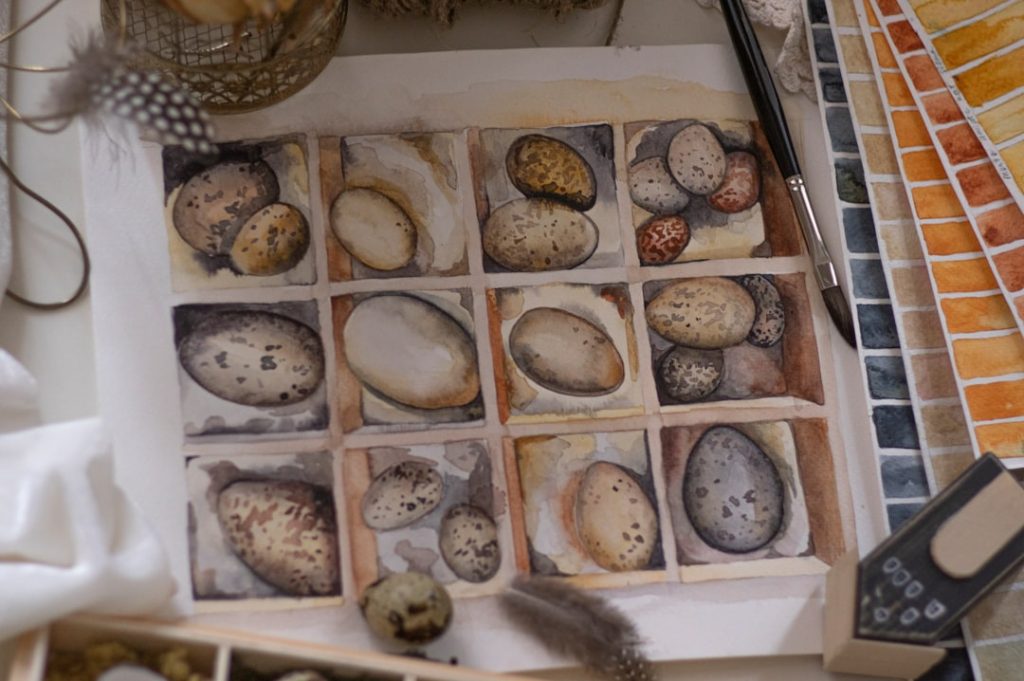The male to female ratio in commercial breeding of quail is a critical factor that directly impacts the success and productivity of the operation. Quail are known for their prolific egg-laying capabilities, and the male to female ratio plays a crucial role in maximizing egg production. In a commercial setting, the goal is to achieve optimal egg production while also ensuring the health and welfare of the quail. This requires careful consideration of the male to female ratio at different stages of breeding, as well as effective management strategies to maintain the balance. Understanding the importance of the male to female ratio is essential for quail breeders to achieve their production goals and ensure the overall well-being of their quail.
The male to female ratio directly influences the reproductive behavior and egg production of quail. In a breeding environment, the presence of males stimulates the females to lay eggs, and the frequency and consistency of mating also impact egg production. An imbalance in the male to female ratio can lead to decreased fertility, lower egg production, and increased stress among the quail. Additionally, an excessive number of males can result in aggressive behavior and competition, leading to injuries and reduced welfare. On the other hand, an insufficient number of males can lead to inadequate mating opportunities and lower fertility rates. Therefore, maintaining the right male to female ratio is crucial for optimizing egg production and ensuring the overall well-being of the quail in a commercial breeding operation.
Table of Contents
- 1 Factors to Consider When Determining the Male to Female Ratio in Quail Breeding
- 2 The Ideal Male to Female Ratio for Different Stages of Quail Breeding
- 3 Managing Male to Female Ratio for Optimal Egg Production in Quail Breeding
- 4 Challenges and Solutions in Maintaining the Male to Female Ratio in Commercial Quail Breeding
- 5 The Impact of Male to Female Ratio on Quail Health and Welfare
- 6 Best Practices for Maintaining the Male to Female Ratio in Commercial Quail Breeding
- 7 FAQs
- 7.1 What is the ideal male to female ratio for commercial breeding of quail?
- 7.2 Why is the male to female ratio important in commercial quail breeding?
- 7.3 What happens if the male to female ratio is not balanced in commercial quail breeding?
- 7.4 How can I determine the male to female ratio for my commercial quail breeding operation?
Key Takeaways
- Maintaining the right male to female ratio is crucial for successful commercial breeding of quail.
- Factors such as fertility, aggression, and egg production should be considered when determining the male to female ratio in quail breeding.
- The ideal male to female ratio varies for different stages of quail breeding, such as breeding, laying, and incubation.
- Managing the male to female ratio is essential for optimal egg production and minimizing stress in quail breeding operations.
- Challenges in maintaining the male to female ratio can be addressed through careful monitoring, culling, and introducing new birds.
Factors to Consider When Determining the Male to Female Ratio in Quail Breeding
When determining the male to female ratio in quail breeding, several factors must be taken into consideration to achieve optimal productivity and welfare. The age and breed of the quail, as well as the specific goals of the breeding operation, will influence the ideal male to female ratio. Additionally, the physical space and resources available, such as nesting areas and feeders, will also play a role in determining the appropriate ratio. It is essential to consider these factors to ensure that the male to female ratio is conducive to successful breeding and egg production.
The age and breed of the quail are important factors to consider when determining the male to female ratio. Different breeds of quail may exhibit varying mating behaviors and reproductive capabilities, which can impact the ideal ratio for optimal egg production. Additionally, the age of the quail can influence their mating behavior and fertility rates. Younger quail may require a different male to female ratio compared to older quail to maximize reproductive success. Furthermore, the specific goals of the breeding operation, such as maximizing egg production or breeding for specific traits, will also influence the ideal male to female ratio. For example, a breeder focused on maximizing egg production may require a different ratio compared to a breeder aiming to selectively breed for certain traits. Considering these factors is essential for determining the most suitable male to female ratio for a commercial quail breeding operation.
The Ideal Male to Female Ratio for Different Stages of Quail Breeding
The ideal male to female ratio for different stages of quail breeding can vary based on the specific goals and requirements of the operation. During the initial breeding stage, a higher male to female ratio may be beneficial to stimulate mating behavior and maximize fertility. As the breeding cycle progresses and egg production becomes the primary focus, adjusting the male to female ratio to optimize egg production is essential. Additionally, during rearing and grow-out stages, maintaining a balanced male to female ratio is crucial for ensuring the overall welfare and productivity of the quail. Understanding the ideal male to female ratio for different stages of quail breeding is essential for achieving success in commercial operations.
In the initial breeding stage, a higher male to female ratio, such as 1:4 or 1:5, may be beneficial to stimulate mating behavior and maximize fertility. The presence of more males can encourage mating activity among the females, leading to increased egg production. However, as the breeding cycle progresses and egg production becomes the primary focus, adjusting the male to female ratio to around 1:8 or 1:10 may be more suitable for optimizing egg production while minimizing stress and aggression among the quail. During rearing and grow-out stages, maintaining a balanced male to female ratio is crucial for ensuring optimal welfare and productivity. A ratio of 1:10 or 1:12 may be appropriate during these stages to minimize competition and aggression while promoting healthy growth and development. Adapting the male to female ratio based on the specific requirements of each breeding stage is essential for achieving success in commercial quail breeding.
Managing Male to Female Ratio for Optimal Egg Production in Quail Breeding
Managing the male to female ratio is crucial for achieving optimal egg production in quail breeding operations. By carefully adjusting the ratio at different stages of breeding and considering factors such as breed, age, and specific goals, breeders can maximize fertility and egg-laying capabilities while ensuring the overall welfare of their quail. Additionally, providing adequate nesting areas, feeders, and space for the quail is essential for managing the male to female ratio effectively. Implementing proactive management strategies will help breeders maintain an optimal male to female ratio and achieve high levels of egg production in their commercial quail operations.
One effective management strategy for optimizing egg production is adjusting the male to female ratio based on the specific goals of the breeding operation. For breeders focused on maximizing egg production, a higher female population with a lower male to female ratio may be beneficial during peak laying periods. This can stimulate increased mating activity and egg production while minimizing stress and aggression among the quail. Additionally, providing ample nesting areas and ensuring a comfortable environment for the quail can further support optimal egg production. Another important aspect of managing the male to female ratio is monitoring reproductive behavior and fertility rates regularly. By closely observing mating activity and fertility levels, breeders can make informed adjustments to the male to female ratio as needed to maintain high levels of egg production.
Challenges and Solutions in Maintaining the Male to Female Ratio in Commercial Quail Breeding
Maintaining the male to female ratio in commercial quail breeding operations presents several challenges that breeders must address to ensure optimal productivity and welfare. One common challenge is managing aggressive behavior and competition among males, which can negatively impact egg production and overall quail welfare. Additionally, maintaining a balanced male to female ratio throughout different stages of breeding can be challenging due to factors such as age, breed differences, and fluctuating fertility rates. Implementing proactive solutions such as providing adequate space, monitoring reproductive behavior, and adjusting ratios based on specific breeding stages can help breeders overcome these challenges and maintain an optimal male to female ratio.
Aggressive behavior among males can pose a significant challenge in maintaining a balanced male to female ratio in commercial quail breeding operations. This behavior can lead to injuries among the quail and disrupt mating activity, ultimately impacting egg production. Providing ample space and resources such as nesting areas and feeders can help minimize competition among males and reduce aggressive behavior. Additionally, closely monitoring mating activity and reproductive behavior can help breeders identify any issues related to aggression early on and make necessary adjustments to the male to female ratio. Another challenge breeders face is maintaining a balanced ratio throughout different stages of breeding due to age and breed differences among quail. Implementing proactive solutions such as adjusting ratios based on specific breeding stages and closely monitoring fertility rates can help breeders overcome these challenges and maintain an optimal male to female ratio for successful commercial quail breeding.
The Impact of Male to Female Ratio on Quail Health and Welfare

The male to female ratio has a significant impact on the health and welfare of quail in commercial breeding operations. An imbalanced ratio can lead to increased stress, aggression, and competition among quail, ultimately affecting their overall well-being. Additionally, an inadequate male to female ratio can result in decreased fertility rates and lower egg production, further impacting the health and productivity of the quail. Maintaining a balanced male to female ratio is essential for promoting optimal health and welfare among quail in commercial breeding operations.
An imbalanced male to female ratio can lead to increased stress among quail due to heightened competition and aggression, ultimately impacting their overall welfare. Providing adequate space, resources, and environmental enrichment can help minimize stress levels among quail and promote a healthier breeding environment. Additionally, maintaining a balanced male to female ratio is crucial for ensuring adequate mating opportunities and promoting natural reproductive behaviors among quail. This contributes to overall welfare by reducing frustration and promoting natural social interactions within the flock. By prioritizing a balanced male to female ratio, breeders can support optimal health and welfare among their quail while also maximizing productivity in their commercial breeding operations.
Best Practices for Maintaining the Male to Female Ratio in Commercial Quail Breeding
Maintaining an optimal male to female ratio is essential for achieving success in commercial quail breeding operations. By carefully considering factors such as age, breed differences, and specific breeding goals, breeders can determine suitable ratios for different stages of breeding that promote high levels of egg production while ensuring overall welfare among their quail. Implementing proactive management strategies such as providing adequate space, monitoring reproductive behavior, and adjusting ratios based on specific breeding stages will help breeders maintain an optimal male to female ratio throughout their operations. By prioritizing a balanced male to female ratio, breeders can promote optimal health, welfare, and productivity among their quail while achieving their production goals in commercial breeding operations.
Maintaining an optimal male to female ratio is crucial for successful commercial quail breeding operations. By carefully considering factors such as age, breed differences, and specific breeding goals, breeders can determine suitable ratios for different stages of breeding that promote high levels of egg production while ensuring overall welfare among their quail. Implementing proactive management strategies such as providing adequate space, monitoring reproductive behavior, and adjusting ratios based on specific breeding stages will help breeders maintain an optimal male to female ratio throughout their operations. By prioritizing a balanced male to female ratio, breeders can promote optimal health, welfare, and productivity among their quail while achieving their production goals in commercial breeding operations.
If you’re considering commercial breeding of quail and are wondering about the ideal male to female ratio, you may find this article on Poultry Wizard helpful. It discusses the importance of maintaining the right balance of males to females in a poultry operation and provides valuable insights into optimizing breeding conditions for various types of poultry.
FAQs
What is the ideal male to female ratio for commercial breeding of quail?
The ideal male to female ratio for commercial breeding of quail is generally 1:4 to 1:6. This ratio helps to ensure successful breeding and optimal egg production.
Why is the male to female ratio important in commercial quail breeding?
The male to female ratio is important in commercial quail breeding because it directly impacts the fertility and productivity of the quail flock. A balanced ratio ensures successful mating and optimal egg production.
What happens if the male to female ratio is not balanced in commercial quail breeding?
If the male to female ratio is not balanced in commercial quail breeding, it can lead to decreased fertility, lower egg production, and potential aggression among the quail. This can ultimately impact the profitability of the breeding operation.
How can I determine the male to female ratio for my commercial quail breeding operation?
To determine the ideal male to female ratio for your commercial quail breeding operation, consider factors such as the breed of quail, the size of the breeding space, and the specific goals for egg production. Consulting with experienced quail breeders or agricultural experts can also provide valuable guidance.
Meet Walter, the feathered-friend fanatic of Florida! Nestled in the sunshine state, Walter struts through life with his feathered companions, clucking his way to happiness. With a coop that’s fancier than a five-star hotel, he’s the Don Juan of the chicken world. When he’s not teaching his hens to do the cha-cha, you’ll find him in a heated debate with his prized rooster, Sir Clucks-a-Lot. Walter’s poultry passion is no yolk; he’s the sunny-side-up guy you never knew you needed in your flock of friends!







